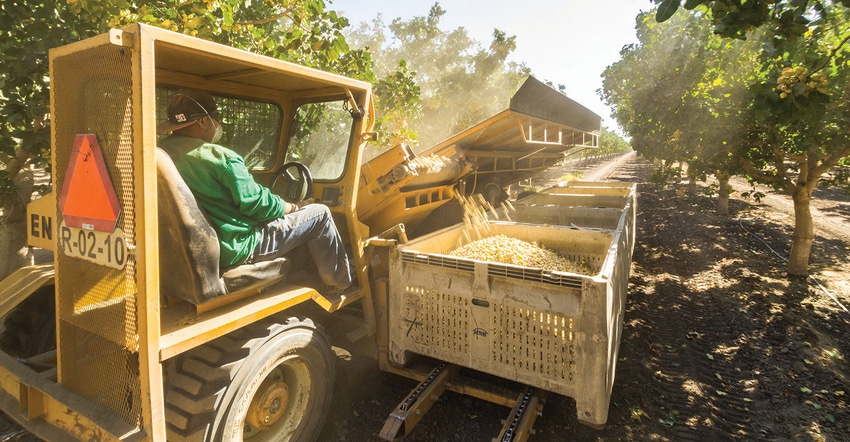
While overall tree nut production harvested last year appears good in terms of both quantity and quality of nut, one Texas industry representative acknowledged that even though farmers know how to handle things like hurricanes and trade disputes, the ever-changing pandemic had been challenging because nobody knows what’s going to happen next and adjustments are constantly ongoing.
In the latest edition of Meridian Growers Shipment Reports, Jim Zion notes, “Year-to-date shipments are running about 11% ahead of last year as consumers in most markets become more optimistic that life will return to normal and buyers want to make sure they have adequate supplies on hand."
The most recent news from the American Pistachio Growers concerning the economic impact of pistachio growing is encouraging. California, growers of 98% of the nation’s supply farmed on 485,000 planted acres, tops the charts by breaking the $5 billion mark in monies injected into the state’s economy last year.
In a sponsored study of grower-processor spending, APG also found that the economic climate of fellow nut-growing states, Arizona and New Mexico, also benefited. Arizona’s young nut industry, already the nation’s second-ranked pistachio state with close to 10,000 planted acres, is producing a huge wave of economic benefit.
“The big takeaway in Arizona,” writes the report’s author, “is that a relatively small number of acres generated a lot of grower-processor spending. Economic output in the ag sector alone totaled $53 million plus millions more in ancillary spending for a total of $92 million in total economic output. If there was no pistachio industry in Arizona and that land was idle, all those dollars would go away.
“What might look like a small amount of money makes a big difference in terms of generating tax dollars to be used for the public good,” wrote researcher Dennis Tootelian.
Ripples of economic benefit
And that thought was echoed by APG officials. President Richard Matoian noted: “Grower-Processor members in Arizona create ripples of economic benefit that extend across the state.” APG Vice President Judy Hirigoyen added: “Arizona has excellent growing conditions for a high-quality nut and we look forward to the expansion of pistachio farming there to help meet global demand for plant-based proteins.”
And although the numbers in nearby New Mexico are even smaller, they are relevant as part of a growing industry in that part of the Southwest.
The report’s section on the Land of Enchantment indicates a $2.7 million contribution to the local economy that helps generate nearly $4 ½ million in business activity within the state as well as create ag sector jobs.
In an interview with Matoian, he said lots of California growers were looking at a move to Arizona where there is relatively inexpensive land. “I’ve heard of two developments of well over a thousand acres in the Kingman area that seems conducive to pistachio growing.”
New Mexico operations still involve relatively small growers in comparison to Arizona and California, one of the challenges being a lack of processing facilities. “They have to truck to Arizona or can only do small batches in New Mexico and that’s a hindrance.
“More and more challenges get placed on California in just about every commodity grower who finally starts to look at where else they could do business. That’s why we’ve seen so much interest in Arizona.”
Nevertheless, Matoian remains positive the CA-AZ-NM corridor looks good for 2021. “Things started off a bit warmer than we would have liked because pistachios tend to do better on the front end with a bit cooler temperatures. We still don’t have a good idea of what this year’s crop might look like because we’re still in the beginning stages of the pollination period and we won’t know the outlook for some time. This year’s crop —- with the exception of Arizona — is supposed to be an off-year. As usual, time will tell.”
For those considering entry into the nut business, a pistachio cost study from the University of California, updated in late 2020, is now available. The document shows sample costs to establish and produce pistachios — in this hypothetical case, on 80 contiguous acres in San Joaquin Valley South — using low-volume irrigation.
Read more about:
PistachiosAbout the Author(s)
You May Also Like




